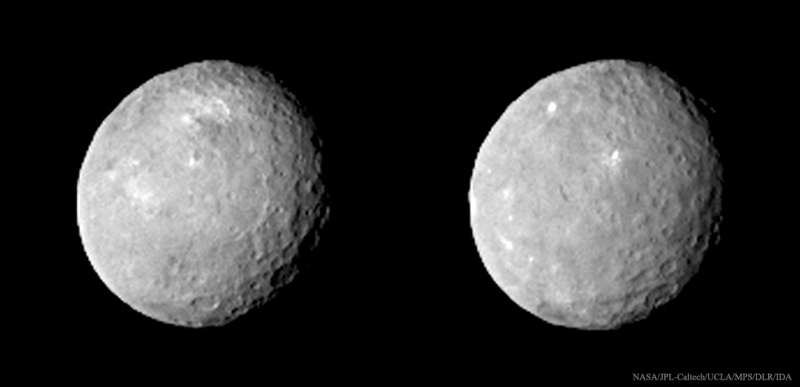
|
Explanation: What are those bright spots on asteroid Ceres? As the robotic spacecraft Dawn approaches the largest asteroid in the asteroid belt, the puzzle only deepens. Sharper new images taken last week and released yesterday indicate, as expected, that most of the surface of dwarf planet Ceres is dark and heavily cratered like our Moon and the planet Mercury. The new images do not clearly indicate, however, the nature of comparatively bright spots -- although more of them are seen to exist. The enigmatic spots were first noticed on Texas-sized Ceres a few weeks ago during Dawn's approach. The intriguing mystery might well be solved quickly as Dawn continues to advance toward Ceres, being on schedule to enter orbit on March 6.
Poll:
What do you think the light spots on Ceres are?
|
January February March April May June July August September October November December |
| ||||||||||||||||||||||||||||||||||||||||||||||||
NASA Web Site Statements, Warnings, and Disclaimers
NASA Official: Jay Norris. Specific rights apply.
A service of: LHEA at NASA / GSFC
& Michigan Tech. U.
Based on Astronomy Picture
Of the Day
Publications with keywords: Ceres
Publications with words: Ceres
See also:
